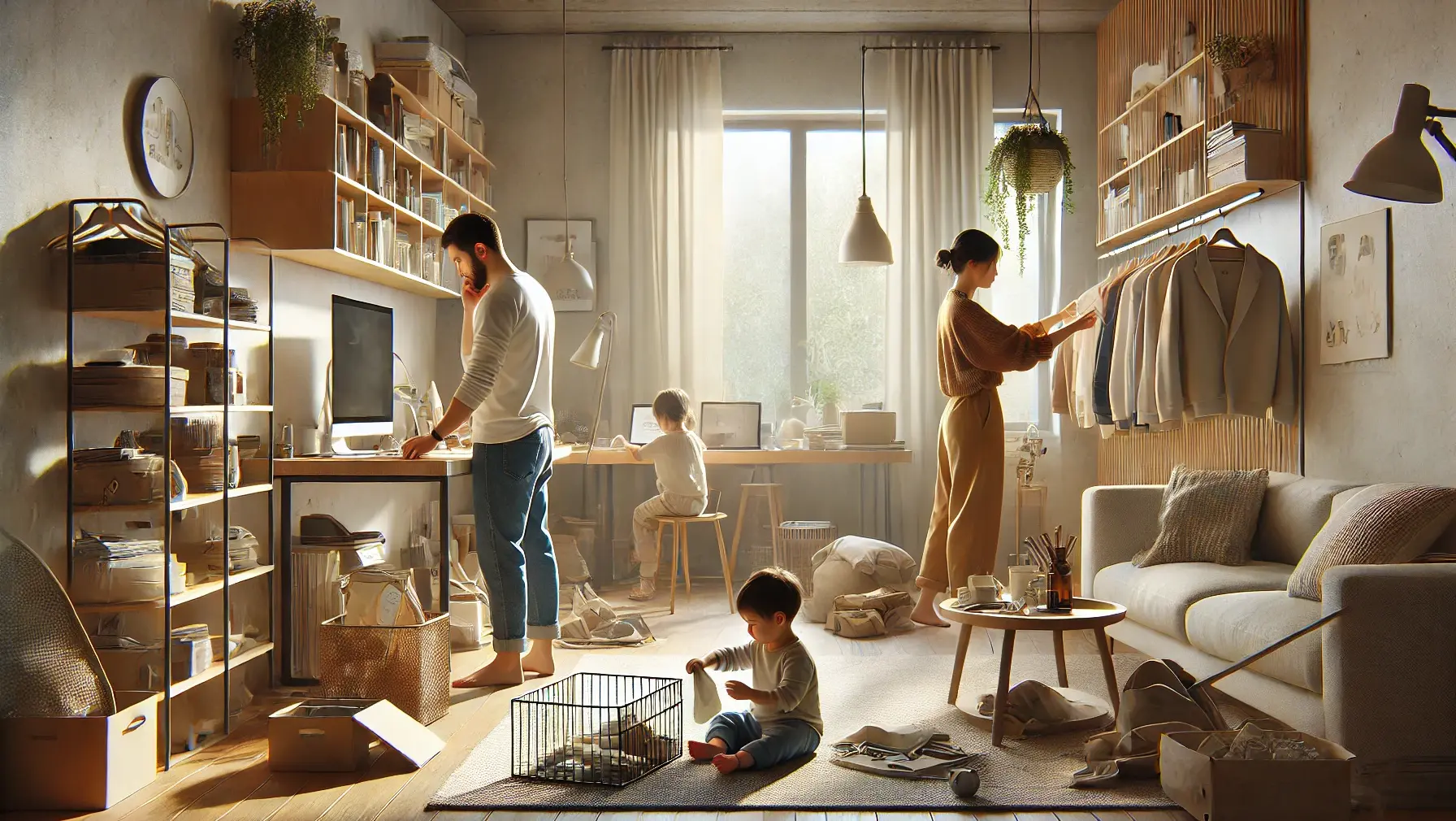In a world full of quick fixes and tempting sales, it’s easy to believe that buying more things will solve life’s problems. Feeling disorganized? Buy a fancy planner. Want to declutter your home? Invest in stylish storage boxes. Need to exercise? Get the latest gym equipment.
But here’s the catch: More often than not, these purchases only provide a fleeting sense of joy. Over time, they can add to the clutter and confusion in our lives, both physically and mentally. Let’s explore how embracing minimalism and creativity can offer a more sustainable, fulfilling path.
The Power of Minimalism: Less is Truly More
Minimalism is about focusing on what truly matters by eliminating the unnecessary. When you have fewer possessions, you’re not just decluttering your home—you’re decluttering your mind. It simplifies decision-making, reduces stress, and frees up your time and energy for things that actually bring value to your life.
Why It Matters
- Clarity: Fewer items mean fewer distractions.
- Savings: Spending less on “stuff” leaves more for experiences or investments.
- Sustainability: Using what you already have reduces waste.
- Peace of Mind: A tidy space fosters calmness and focus.
Creativity: The True Problem-Solving Tool
One of the most rewarding aspects of minimalism is the creativity it unlocks. When you challenge yourself to solve problems without buying something new, you exercise your creative muscle—and it’s a skill that grows stronger with use.
Engage your kids in this process, too! Problem-solving together not only builds their creativity but also strengthens your bond. These moments of inventiveness teach them resourcefulness, a trait that will serve them for a lifetime.
Practical Ideas for Everyday Needs
Let’s look at some common household challenges and creative solutions.
1. Decluttering Your Home
- The Challenge: Too much clutter, not enough organization.
- Minimalistic Solution: Start by removing what you no longer use. Instead of buying new storage bins, repurpose shoeboxes, jars, or baskets you already have. Decorate them with old wrapping paper or fabric for a fresh look.
2. Boosting Productivity
- The Challenge: Staying focused while working or studying.
- Minimalistic Solution: Use sticky notes or a plain notebook to jot down tasks instead of investing in an expensive planner. Create a dedicated workspace with items you already own to minimize distractions.
3. Enhancing Fitness
- The Challenge: Starting a fitness routine without expensive equipment.
- Minimalistic Solution: Use furniture like chairs for bodyweight exercises or towels for stretching routines. If you’re considering buying gym equipment or a subscription, challenge yourself first: Can I commit to a 30-day routine with what I have? If yes, reward yourself with a thoughtful purchase later.
4. Decorating Your Home
- The Challenge: Wanting to refresh your living space.
- Minimalistic Solution: Rearrange furniture for a fresh perspective. Use everyday items like mason jars, books, or plants to create aesthetic focal points. Old scarves can double as table runners or wall hangings.
Smart Shopping: A Minimalist’s Approach
Minimalism doesn’t mean never buying anything—it means buying intentionally. Here’s how to make smarter choices:
- Sleep on It
Add the item to your wishlist and wait a few weeks. Do you still feel the need for it? If yes, go ahead. If not, you just saved yourself some money and space! - Set a Challenge
Before buying something, challenge yourself to use what you already have for a set period. For example: “If I complete 20 home workouts this month, I’ll invest in a gym subscription.” - Prioritize Quality Over Quantity
When you do make a purchase, opt for items that are durable, versatile, and truly necessary.
Learning from Our Ancestors
Our ancestors lived simpler lives, not by choice but by necessity. They solved problems using available resources, creating tools, repairing items, and improvising solutions. Their resourcefulness is a powerful reminder that creativity often flourishes when options are limited.
Final Thoughts: A Life of Creativity and Simplicity
Minimalism and creativity aren’t just philosophies—they’re lifestyles that bring clarity, peace, and joy. By choosing simplicity, you free yourself from the cycle of consumption and focus on what truly matters. By nurturing creativity, you not only solve problems more effectively but also inspire those around you, especially your children, to think outside the box.
Next time you face a challenge, pause. Ask yourself: Can I solve this with what I already have? You’ll be amazed at how fulfilling and empowering the answer can be. 😊
What’s your favorite way to embrace creativity or minimalism?
Share your thoughts below—I’d love to hear from you! 💡
